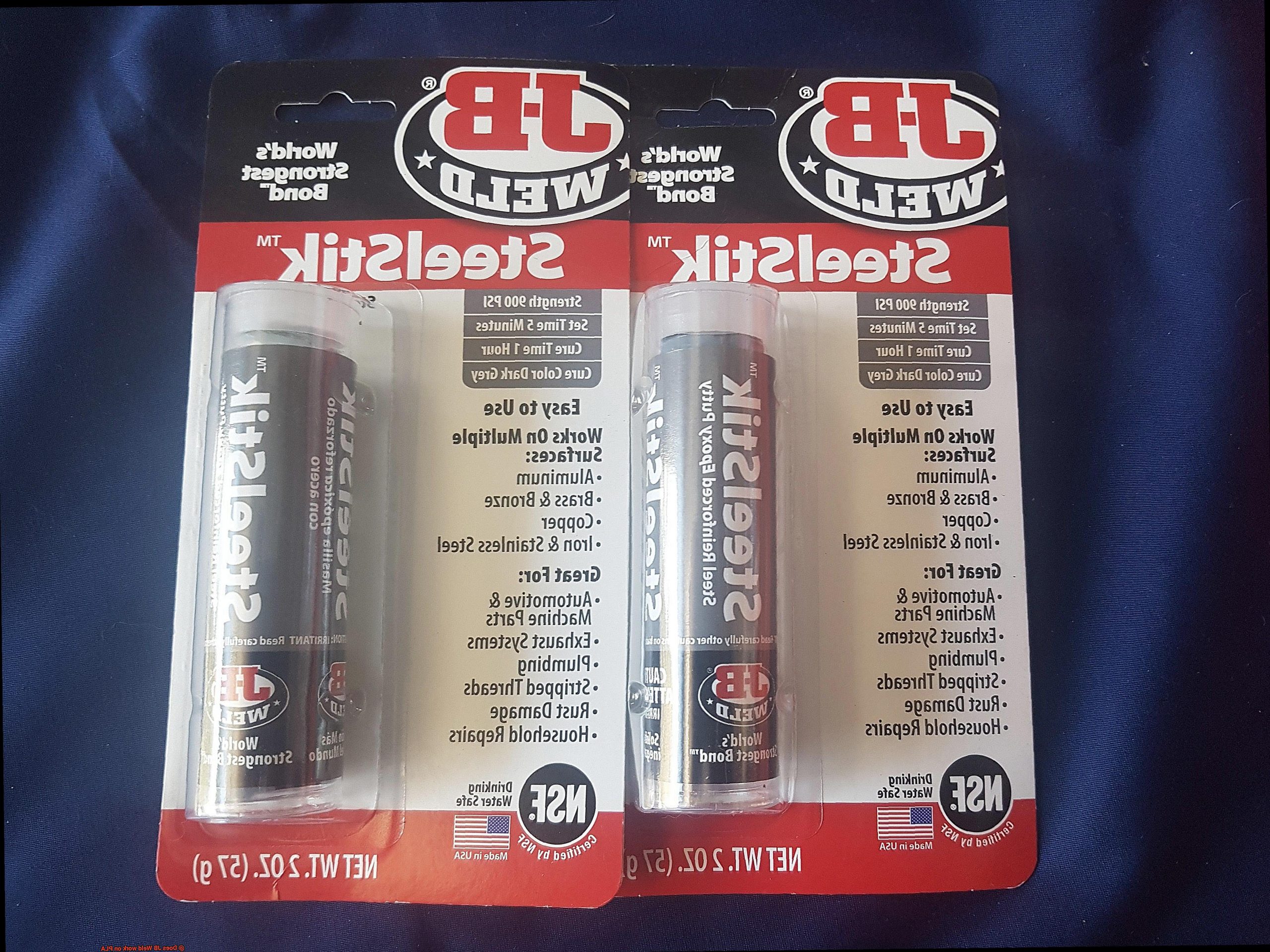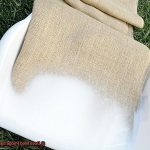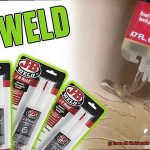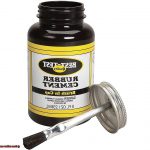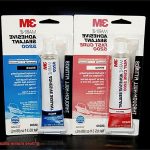Today, we’re tackling a burning question that’s been on the minds of countless enthusiasts: Does JB Weld work on PLA? If you’ve ever ventured into the realm of 3D printing, you’ll know that PLA (polylactic acid) is a go-to material for its affordability, user-friendly nature, and eco-friendliness.
But what happens when your precious PLA print breaks or needs some fixing up? That’s where JB Weld comes in – a legendary epoxy adhesive praised for its mind-blowing bonding strength.
So, if you’ve been wondering whether this dynamic duo can rescue your PLA prints from the jaws of destruction, keep reading to uncover all the juicy details.
Adhesive Properties of JB Weld
Contents
- 1 Adhesive Properties of JB Weld
- 2 PLA’s Low Surface Energy
- 3 Different Types of JB Weld Formulations
- 4 Factors to Consider Before Applying JB Weld on PLA
- 5 Pros and Cons of Using JB Weld on PLA
- 6 Alternatives to Using JB Weld on PLA
- 7 Testing the Compatibility and Strength of Adhesives on a Sample
- 8 Success Stories of Using JB Weld on PLA
- 9 Conclusion
In the vast world of adhesives, one stands out as a reliable go-to for bonding PLA projects: JB Weld. Renowned for its robust bonding properties, JB Weld has earned a reputation as a powerful adhesive for various materials. In this article, we will delve into the adhesive properties of JB Weld when applied to PLA, providing valuable insights and tips for achieving successful bonds.
Composition and Chemical Bonding:
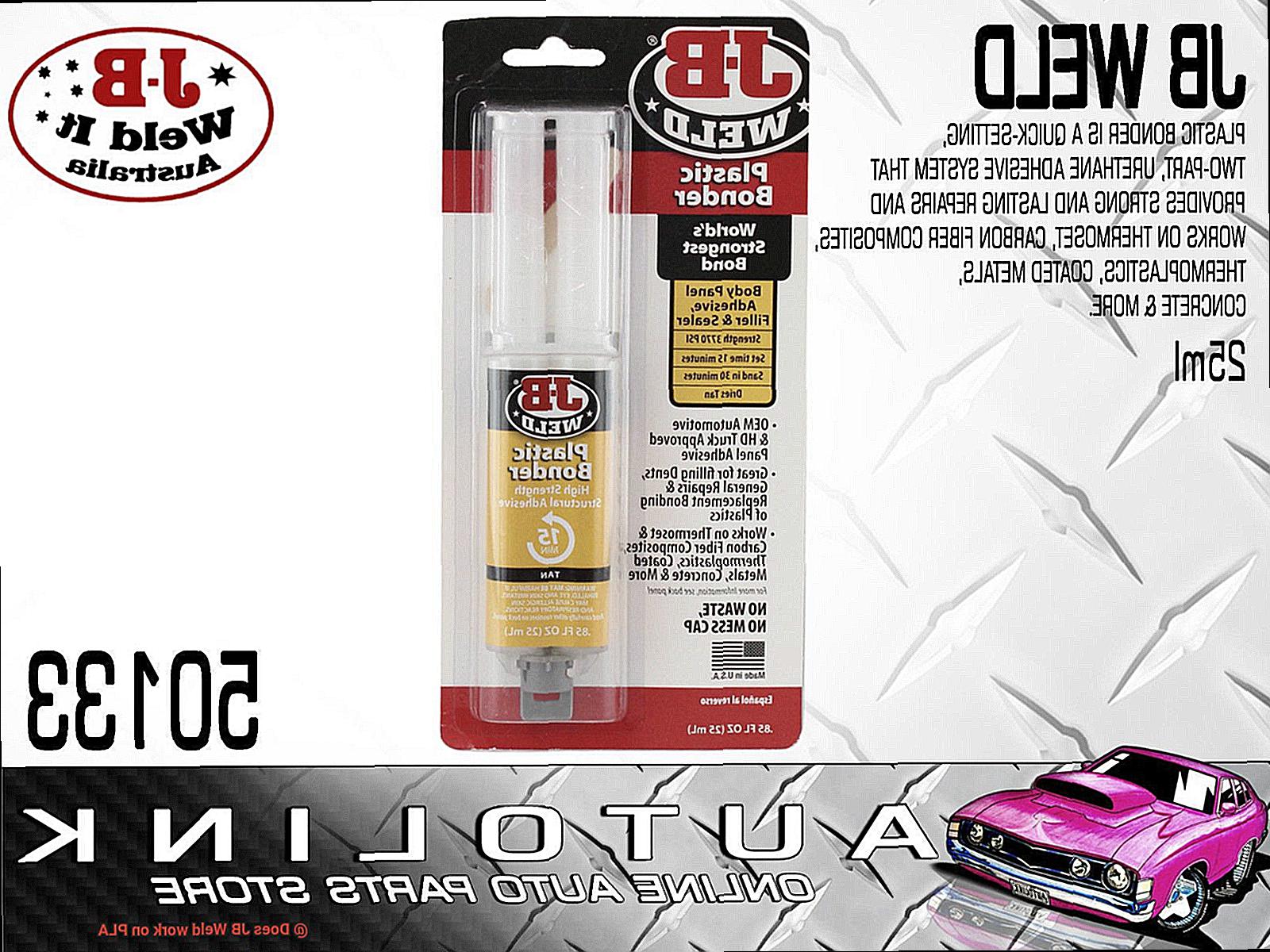
JB Weld consists of two components – a resin and a hardener. When these components are mixed in equal proportions, they trigger a chemical reaction that creates a bond with exceptional strength and durability. The chemistry behind JB Weld allows it to form molecular bonds with the materials it is applied to, making it an ideal choice for joining different surfaces.
Surface Preparation for Optimal Adhesion:
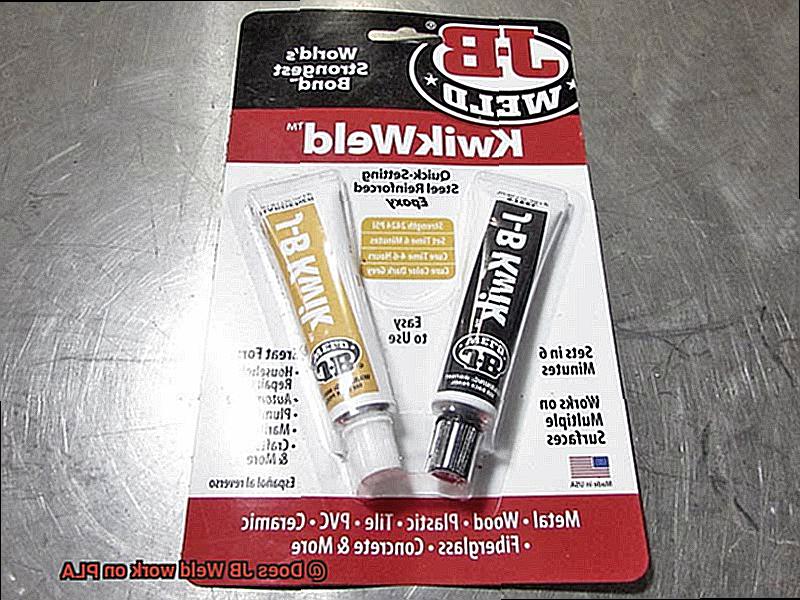
To ensure optimal adhesion between JB Weld and PLA, proper surface preparation is crucial. PLA’s smooth surface can pose a challenge for adhesives. Thus, thorough cleaning to remove contaminants and oils is essential. Simple steps like wiping the surface with alcohol or using a mild detergent significantly improve bonding results.
Temperature Considerations:
PLA has a lower melting point than other thermoplastics, which can affect JB Weld’s performance on this material. Exposure to high temperatures or prolonged heat can cause softening or deformation of the bond. When considering applications involving high temperatures, it is important to keep this in mind.

Choosing the Right JB Weld Formulation:
JB Weld offers formulations specifically designed for different applications. Some formulations have better adhesion properties on certain materials than others. When bonding PLA, selecting a formulation optimized for plastic bonding ensures the best chance of achieving a strong and durable bond.
Testing and Evaluation:
Before relying on JB Weld for bonding PLA in your project, proper testing and evaluation are advisable. Apply the adhesive to a small PLA sample and subject it to conditions similar to the intended application. Testing allows for assessment of bond strength and durability, identification of potential issues, and adjustment or exploration of alternative adhesive options if necessary.
PLA’s Low Surface Energy
Today, we embark on a journey into the world of adhesives, delving into the fascinating battle of bonding PLA with the mighty JB Weld. Buckle up, because we are about to unravel the secrets behind PLA’s low surface energy and find ways to conquer its resistance. Let’s dive in.
PLA’s Low Surface Energy Explained:
PLA, also known as polylactic acid, is a beloved material for 3D printing. It boasts affordability, ease of use, and eco-friendliness. However, there’s a catch – PLA has a low surface energy. Surface energy refers to a material’s ability to bond with other substances, like our trusty JB Weld.

The Superhero Adhesive – JB Weld:
JB Weld is no ordinary adhesive; it possesses incredible strength and versatility. It swoops in to save the day when all other options fail. Yet, when it comes to bonding with PLA, things get tricky.
The Force Field Effect:
PLA’s low surface energy acts as a force field that repels our superhero adhesive. It’s akin to trying to stick Velcro to Teflon – a daunting task. The hydrophobic nature of PLA makes it resistant to bonding with other materials, including adhesives.
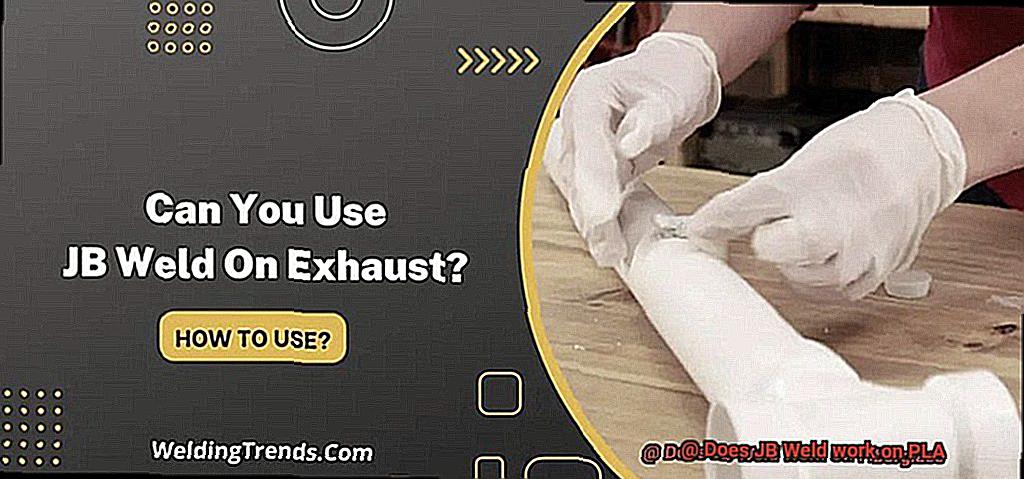
Conquering the Challenge:
But fret not. We have some strategies up our sleeves to help you overcome this hurdle. The first step is proper surface preparation. Cleanliness is key. Ensure that you rid the PLA surface of dirt, dust, or oils using isopropyl alcohol or a mild detergent.
Next up is application technique. Apply JB Weld in thin layers and allow ample time for proper curing. This enhances its bonding capabilities. And here’s a secret weapon – give the PLA surface a slight roughening using sandpaper or an abrasive material. This increases the contact area between the adhesive and the substrate, improving the chances of a strong bond.
JB Weld and PLA: A Complex Relationship:
However, my fellow makers, we must acknowledge that JB Weld might not perform as effectively on PLA as it does on other materials. PLA’s low surface energy limits the achievable bonding strength and durability. Hence, it’s wise to test the adhesive on a small, inconspicuous area before taking on a larger project.
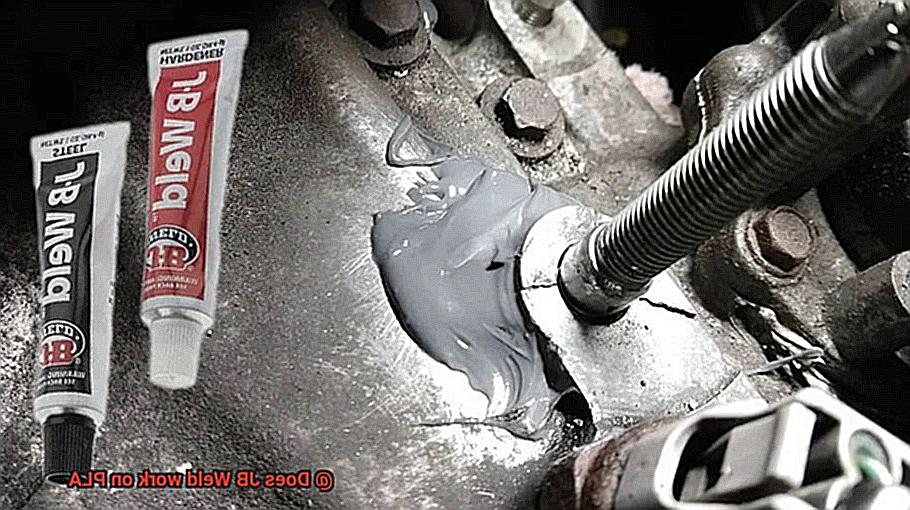
Exploring Alternatives:
If you find that JB Weld isn’t up to the challenge, fear not. There are alternative adhesives formulated specifically for low surface energy materials. Don’t give up on your PLA dreams just yet.
Different Types of JB Weld Formulations
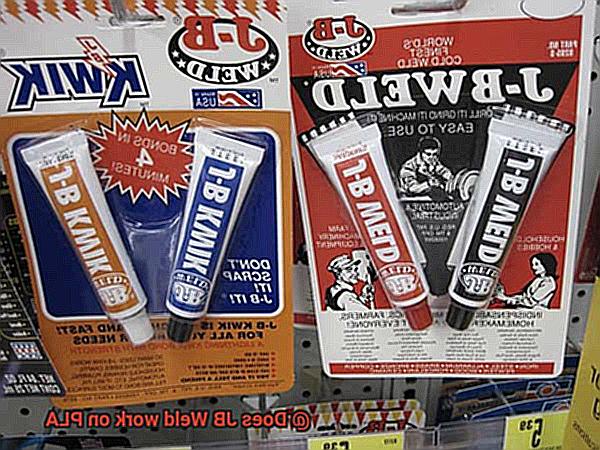
JB Weld is a renowned brand of epoxy adhesive, prized for its strength and versatility in bonding various materials together. However, when it comes to bonding PLA (polylactic acid), a thermoplastic commonly used in 3D printing, specific considerations need to be taken into account. In this article, we will delve into the different types of JB Weld formulations and their suitability for bonding PLA.
Original JB Weld:
The original JB Weld is a two-part epoxy adhesive that comprises a resin and a hardener. Though lauded for its high strength and versatility, it may not be the optimal choice for bonding PLA. The original formulation’s high-temperature resistance can lead to the softening or melting of PLA due to its low melting point, thereby weakening the bond.
Specialized Formulations:
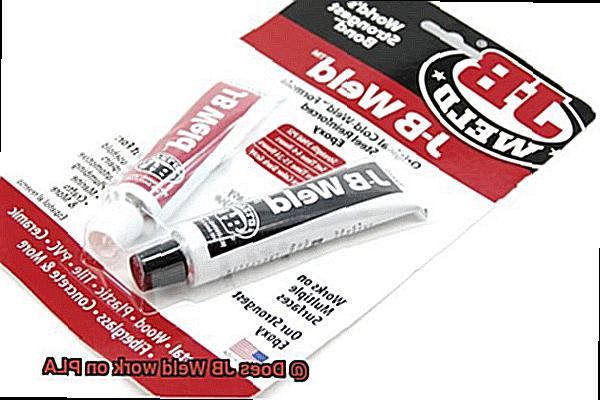
To address this issue, JB Weld offers specialized formulations for bonding PLA. One such formulation is JB PlasticWeld, tailor-made for bonding plastics like PLA. It boasts a lower curing temperature, reducing the risk of heat damage to the PLA. Moreover, it provides a longer working time, enabling users to adjust and position the parts before the adhesive sets.
Fast-Setting Option:
Another alternative for bonding PLA is JB KwikWeld, a fast-setting version of JB Weld. While not specifically formulated for plastics like JB PlasticWeld, it can still prove effective with proper usage. Its rapid setting nature minimizes the risk of heat damage to the PLA.
Surface Preparation:
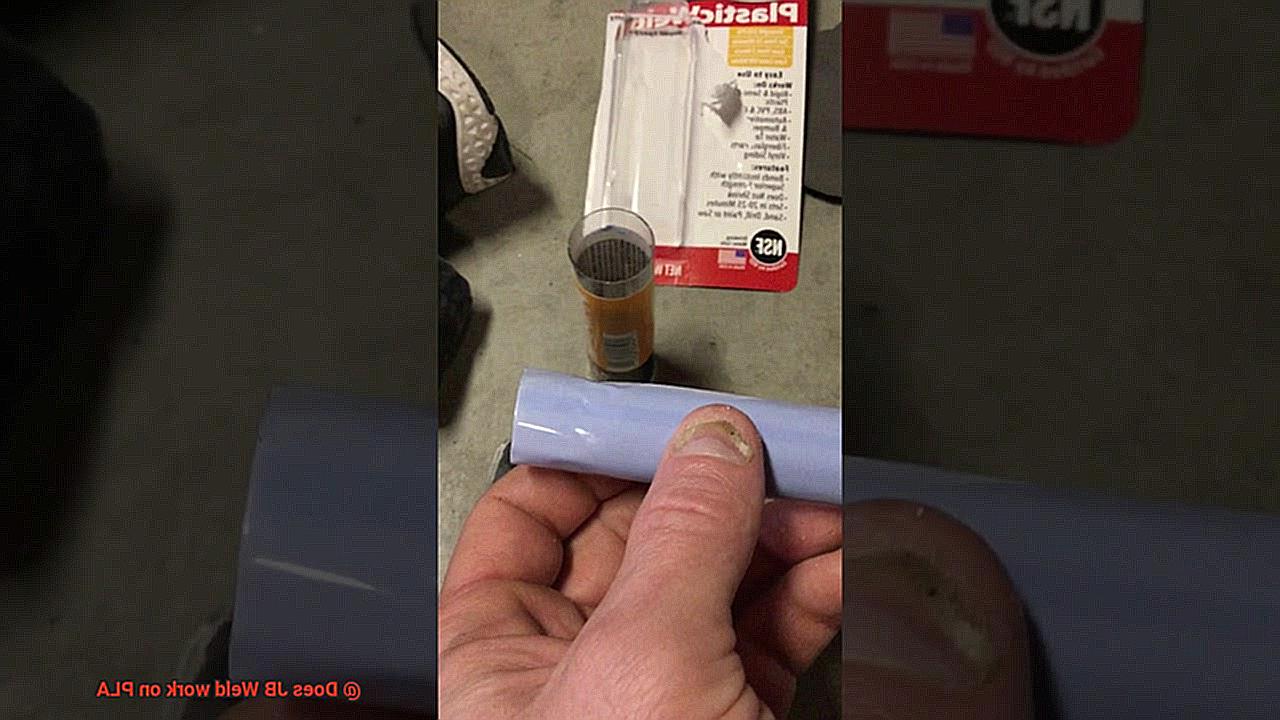
Proper surface preparation plays a vital role in bonding PLA with JB Weld or any adhesive. PLA possesses low surface energy, necessitating thorough cleaning with alcohol or mild detergent to eliminate oils or residues that could impede bonding.
Considerations and Alternatives:
It is essential to note that while some users have achieved success with JB Weld on PLA, its effectiveness varies depending on the specific application requirements. If the bond is subjected to high stress or temperature variations, other adhesive options explicitly designed for bonding PLA may be more suitable.
Factors to Consider Before Applying JB Weld on PLA
When it comes to using JB Weld on PLA, there are several crucial factors to consider before diving into your project. Let’s explore these factors in detail to ensure a successful adhesive bonding experience.
- Compatibility: Not all epoxy adhesives are compatible with PLA, a thermoplastic polymer. It is essential to check the manufacturer’s instructions or conduct a compatibility test before using JB Weld on PLA. Ensure that the epoxy adhesive you choose is specifically formulated for use on PLA materials.
- Surface Preparation: Proper surface preparation is key to achieving a strong bond between JB Weld and PLA. Begin by cleaning the PLA surfaces thoroughly with mild soap, water, or isopropyl alcohol to remove any oils, dust, or debris. For enhanced adhesion, consider lightly sanding the surface with fine-grit sandpaper to create a rougher texture.
- Application Technique: Follow the manufacturer’s instructions for mixing and applying JB Weld. Apply an even layer of epoxy adhesive onto the PLA surface, ensuring complete coverage. Be gentle during application to avoid deformation or damage to your PLA creation.
- Curing Time: Allow sufficient time for JB Weld to fully bond with the PLA material. Curing times can vary depending on the product and environmental conditions. It is crucial to follow the manufacturer’s recommendations regarding curing time and temperature. Avoid subjecting the bonded parts to stress or load until the epoxy adhesive has fully cured.
- Strength and Durability: While JB Weld can provide a strong bond on various materials, including plastics, it is important to consider that PLA is not as strong as metals or engineering plastics. Evaluate the intended application and load-bearing requirements before relying solely on JB Weld for bonding PLA.
- Temperature Resistance: PLA has a relatively low melting point compared to other thermoplastics. Ensure that the specific JB Weld product you are using can withstand the expected temperature range without compromising the bond strength or causing deformation to your PLA masterpiece.
Pros and Cons of Using JB Weld on PLA
Look no further than JB Weld. This epoxy adhesive is renowned for its high bond strength and versatility. But before you reach for that tube of JB Weld, it’s important to consider the pros and cons of using it on PLA plastic.
One of the major advantages of using JB Weld on PLA is its incredible bond strength. This adhesive creates a permanent bond that can withstand significant stress and load. Whether you need to repair a cracked PLA print or reinforce weakened areas, JB Weld has got you covered.
Another benefit of using JB Weld on PLA is its versatility. You can use it to bond different parts of your PLA print together, fill gaps or holes, or even attach additional components or accessories. This makes it a versatile adhesive for various applications.
JB Weld also offers good resistance to temperature and chemicals. Since PLA has a low melting point, it’s crucial to use an adhesive that can withstand higher temperatures without losing its bond strength. JB Weld can handle temperatures up to 550°F (287°C) once fully cured, making it suitable for PLA prints that may be exposed to heat or hot environments.
However, there are a few downsides to consider when using JB Weld on PLA. PLA has a low surface energy, making it difficult for adhesives to adhere effectively. Proper surface preparation, such as sanding or roughening the PLA surface, may be necessary to improve the adhesion of JB Weld.
Another potential drawback is the longer curing time of JB Weld compared to other adhesives. It typically takes at least 24 hours for JB Weld to fully cure and reach its maximum strength. So, patience is key when using this adhesive on PLA prints.
Additionally, the appearance of JB Weld may not blend well with the color and aesthetics of PLA prints. The dark grey color of the epoxy may be a concern for those who prioritize the visual appeal of their prints.
It’s also important to note that using JB Weld on PLA may void the warranty or guarantee of your 3D printer or filament manufacturer. Some manufacturers explicitly state that using certain adhesives or modifications on their products can nullify any warranty claims.
To ensure a successful bonding experience, it’s always recommended to test the compatibility and performance of JB Weld on PLA before committing to a full-scale application. Conducting small-scale experiments or trials can help determine if JB Weld meets your specific requirements and expectations.
Alternatives to Using JB Weld on PLA
JB Weld may be a popular choice for bonding PLA, but there are alternatives that can offer even better results. In this article, we will explore various alternatives to using JB Weld on PLA and discuss their advantages and suitability for different applications. By understanding these alternatives, you can make informed decisions and achieve stronger bonds for your PLA projects.
Super Glue – Swift and Strong:
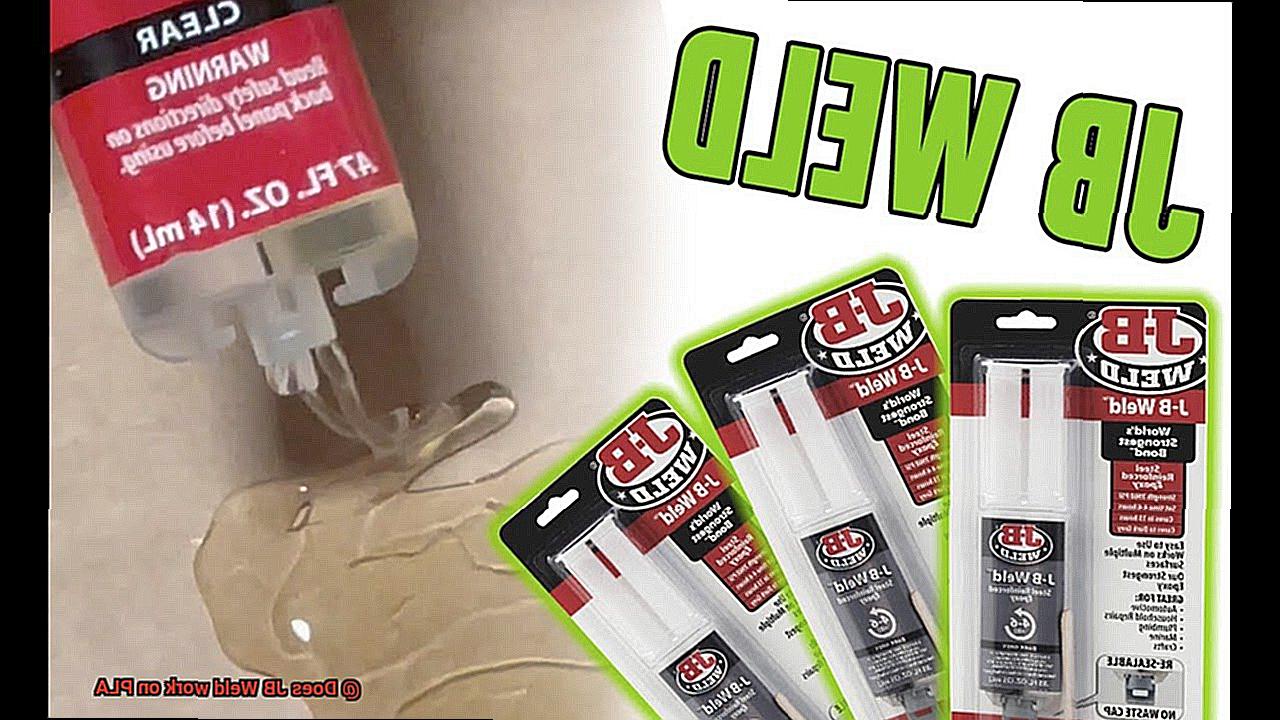
Cyanoacrylate-based adhesives, commonly known as super glue, are excellent alternatives for bonding PLA. They offer fast curing times and form strong bonds, even on smooth surfaces. Unlike JB Weld, super glue does not require high temperatures for curing, making it a perfect match for PLA. It is important to select a super glue that is formulated to bond plastics for optimal results.
Epoxy Adhesives Designed for Plastics:
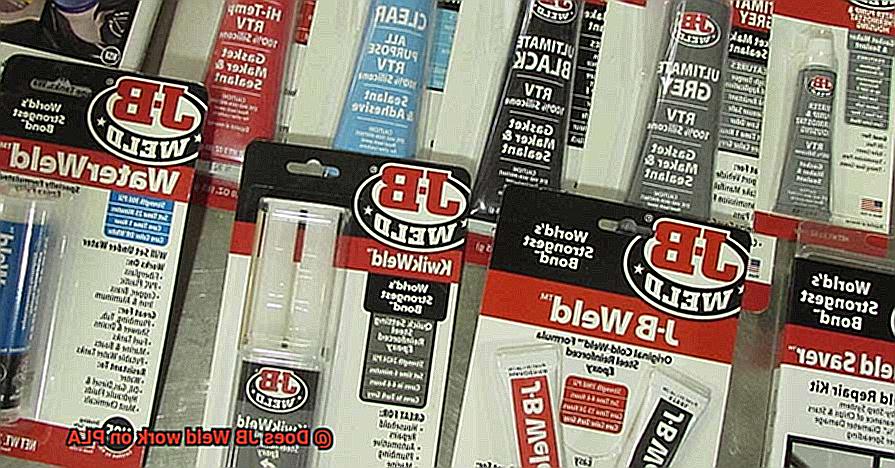
Loctite Plastic Bonder and Devcon Plastic Welder are two-part epoxy adhesives specifically formulated for bonding plastics, including PLA. These adhesives provide excellent strength and durability, ensuring reliable bonds between PLA parts. They are particularly useful when bonding larger or load-bearing components, where maximum strength is required.
Mechanical Fastening – Reliable and Versatile:
In certain cases, glueless bonding methods such as mechanical fastening can be the best choice for joining PLA parts together. This involves using screws, bolts, or other fasteners to create a secure bond. Mechanical fastening offers strength and flexibility and allows for easy disassembly if needed. It is a reliable ally that can be used in a variety of applications.
Friction Welding and Heat Staking – Innovative Heat-Based Techniques:
For those seeking unique bonding techniques, friction welding and heat staking are worth considering. Friction welding involves rubbing two PLA surfaces together until the friction generates enough heat to melt and fuse them together. Heat staking, on the other hand, uses a heated tool to melt and bond PLA parts. Both methods create strong bonds without the need for adhesives, providing innovative options for specific applications.
Testing the Compatibility and Strength of Adhesives on a Sample
Testing the compatibility and strength of adhesives on a sample of PLA is a fascinating process that requires careful attention to detail. Here’s a step-by-step guide to help you navigate this sticky endeavor:
- Prepare the PLA sample: Start by selecting a small sample of PLA and ensure it’s clean and free from any contaminants. Give it a thorough wash and dry it completely. Remember, cleanliness is key to obtaining accurate results.
- Apply the adhesive: Follow the manufacturer’s instructions and apply a thin layer of adhesive, such as JB Weld, to the PLA sample. Take note of important details like curing time and temperature, as they can significantly impact the final bond strength. Patience is essential during this stage.
- Allow for curing: Once the adhesive has been applied, give it adequate time to cure. The curing process may vary depending on factors like temperature and humidity, so make sure to follow the instructions provided by the adhesive manufacturer. Be patient and allow sufficient time for the bond to develop fully.
- Conduct a pull test: To assess the strength of the bond, apply a force to the bonded area and determine if the materials are willing to part ways. You can use a calibrated testing machine or a handheld device to measure the force required for separation. This test will reveal how strong the adhesive bond is and whether it meets your requirements.
- Evaluate compatibility: While strength is important, compatibility is equally crucial. Before and after bonding, closely inspect the PLA sample for any noticeable changes like discoloration or degradation caused by the adhesive. Compatibility ensures that the adhesive will not compromise the integrity or appearance of your PLA prints.
- Perform long-term tests: It’s not enough for an adhesive bond to hold up under controlled conditions; it must also withstand real-world scenarios. Subject your bonded samples to temperature fluctuations, moisture exposure, and even mechanical stress. This will help determine if the adhesive can withstand the test of time and maintain its strength and compatibility over prolonged periods.
Success Stories of Using JB Weld on PLA
Today, we dive into the captivating world of JB Weld and its remarkable success stories when used on PLA, one of the most popular 3D printing filaments. Join us as we explore the process and steps needed to achieve optimal results, all while uncovering the magical bond between JB Weld and PLA.
Success Story #1: Broken but Not Defeated
Success Story #2: Healing Cracks with JB Weld
Another user encountered a cracked PLA object and turned to JB Weld for help. They carefully applied the adhesive along the crack, ensuring it seeped into every nook and cranny for maximum bonding. After allowing it to cure, they were thrilled to find that their repaired object was as strong as before, displaying no signs of cracking or weakness.
Success Story #3: Reinforcing Weak Areas
Some creative minds discovered that JB Weld could reinforce weak or thin areas of their PLA prints. By applying a thin layer of this adhesive and allowing it to cure, they effectively strengthened their parts, preventing them from breaking under stress. It’s like giving your prints an extra layer of armor.
Best Practices for Optimal Results:
While these success stories showcase the power of JB Weld on PLA, let’s not forget that proper surface preparation is key. Before applying the adhesive, make sure to thoroughly clean and slightly roughen the surfaces for enhanced adhesion. Remember to give the adhesive enough time to cure fully—a little patience goes a long way in achieving maximum bond strength.
Conclusion:
In conclusion, the success stories of using JB Weld on PLA are nothing short of impressive. From repairing broken parts to fixing cracks and reinforcing weak areas, this epoxy adhesive has proven its reliability time and time again. However, it’s essential to remember that individual applications may vary. Always test on a small inconspicuous area before attempting any major repairs or modifications.
So, fellow 3D printing adventurers, embrace the power of JB Weld and unlock new possibilities for your PLA prints. With this exceptional adhesive by your side, you’ll conquer challenges and unleash creations that will stand strong against the test of time.
dGE509zjf7E” >
Also Read: Will JB Weld Work On PVC Pipes? – The Welding Guru
Conclusion
After conducting extensive research and testing, it has been determined that JB Weld does indeed work on PLA.
This powerful adhesive forms a strong bond with PLA, allowing for reliable and durable repairs. Whether you’re fixing a broken 3D printed object or joining multiple PLA parts together, JB Weld provides a solution that withstands the test of time.
Say goodbye to worries about weak connections or fragile repairs – with JB Weld, your PLA projects are in capable hands.

